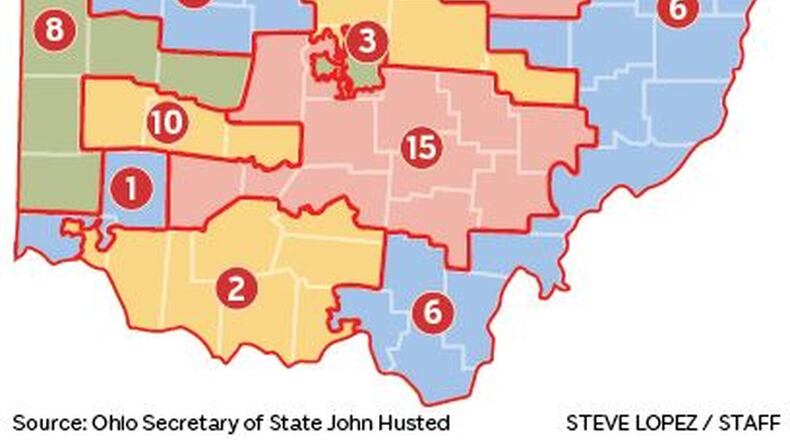Democratic and Republican leaders in both the House and Senate have put forward map proposals, embodied in four bills. Members of the public and various voting-rights groups have also submitted map proposals. The committee has the four legislative bills on its official agenda, but the committee’s chairs have not stated if it will act on any of them.
At the hearing’s end Friday, committee member Rep. Beth Liston, D-Dublin, put those questions directly to co-chair Rep. Shane Wilkin, R-Hillsboro.
Liston asked if the committee will hold more public meetings and whether it will endorse, amend or adopt a proposed map.
“Me and the co-chair will be discussing that after the meeting and we’ll be letting everyone know as soon as possible,” Wilkin said.
. Most speakers Friday followed a now-familiar pattern from previous hearings: generally supportive of the Democratic Senate proposal, while opposing Republican maps as designed to maintain or increase the party’s majority in the congressional delegation.
Republicans hold 12 of Ohio’s 16 current U.S. House seats. Due to 2020 census results the state will lose one seat, so legislators are required to approve a new map of congressional districts. Republican proposals have been interpreted - based on historic voting patterns within the proposed districts - to likely increase GOP hold on congressional seats.
Democratic proposals would likewise increase Democrats’ chances of winning House seats, but would leave a majority in Republican hands, based on voting trends. Democrats say their proposal makes districts which are in line with the rough 55%-45% breakdown of how Ohioans have voted over the last decade.
Jeniece Brock, vice chair of one group that has submitted its own proposed map - Ohio Citizens Redistricting Commission - testified over concern that several map proposals split minority communities, which dilutes their voting power. Her Akron-area county is split four ways under the current map, she said.
“We have not had a congressmember that has actually lived in the county of Summit for the last 10 years,” Brock said. Since Summit is Ohio’s fourth most populous county, it’s evident that is unfair, she said.
Separate House and Senate committees held hours of hearings on map proposals before the joint committee formed.
Districts are commonly deemed “competitive” if they have a partisan split no greater than 55% to 45%. Using that standard, the Senate Republican proposal would likely create five Republican, two Democratic and eight potentially competitive districts, though all of the latter would lean Republican.
The Senate Democrats map would create eight Republican-leaning districts and seven Democrat-leaning districts. Four would be considered competitive, with one of those leaning Republican.
The House Republican proposal would create eight Republican districts, two Democratic, and five up for grabs.
The House Democratic map would create six Republican, four Democratic and five competitive districts.
About the Author

